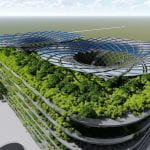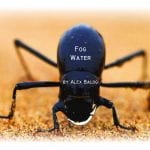Class Notes
April 21, 2015
I. Form-Finding: Frei Otto’s Institute of Lightweight Structures, Stuttgart
Digital/Material explorations : AA, Stuttgart, CITA, RMIT
II. Form-Finding: meshes with Kangaroo
In-class: Create a simple structure in Kangaroo
Revised Assignment 3
Use biomimetic principles to design a module for a wall system that will modulate light as well as collect or direct rainwater. Then create a GH definition that shows how the module could be adapted for different conditions: either as custom located alternative versions or as a kinetic piece. Keeping in mind the collective effort to create an installation.
Assume the Willamette Valley situation with dry hot summers and wet cool winters.
For next Wed April 29, each student should address Steps 1 & 2 of the following process, and work with classmates to find a direction.
1. Material: using a biological example or an architectural example based on biomimicry as inspiration, experiment with materials for a structural module
2. Digital: model an adaptable or dynamic module in GH, cluster and refine
—
3. Material: Build several revised module prototypess and experiment with module clusters
4. Sketch potential overall forms, plan installation.
5. Submit scheme for installation approaval
—
6. Digital: Model overall form in Rhino GH
7. Digital: Simulate performance with daylighting simulation and rainwater catchment
—
8. Gather materials and build
Readings
Please read these two articles that are on the course folder under Readings
- Natural structures: strategies for geometric and morphological optimization by Agustín PÉREZ GARCÍA & Fernando GÓMEZ MARTÍNEZ provides a strong rationale for biomimetic structures using beautiful examples.
- Evolutionary Architecture, some perspectives from biological design by J.Scott Turner, from Architectural Design magazine.
Related References
Center for Architecture, Science and Ecology (CASE at RPI) develops prototype eco-building systems, including low-tech and high-tech modular facades
MIT Professor Neri Oxman’s video and the Materialecology blog , explains how she uses biology as inspiration. She explains how she designed not objects but new processes for sculpting form from the interface of environment and materials, using computational analysis and fabrication. She likens the designer as a gardener steering towards environmental fitness.
Let me know if you have any questions.





Leave a Reply